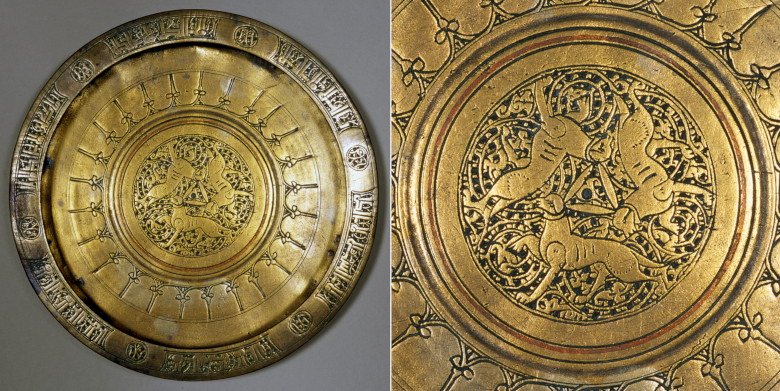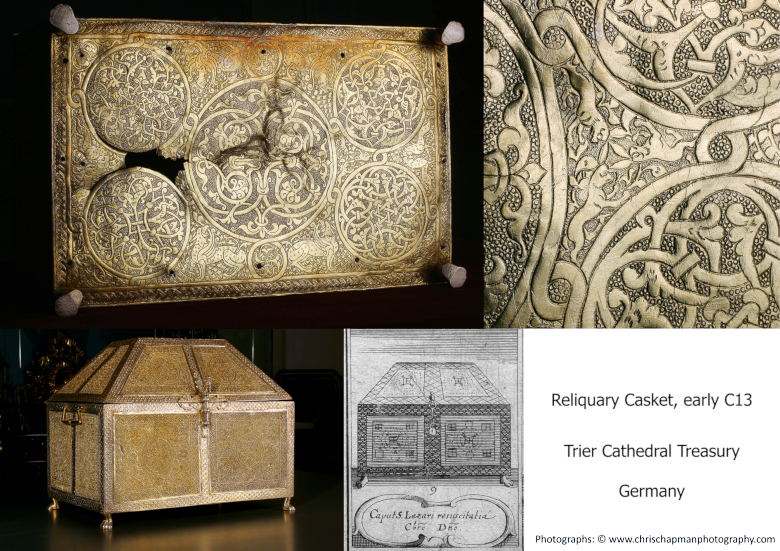|
Buddhist, Islamic and Jewish Occurrences of the Three Hares

C13 Iranian Tray, Keir Collection. © Chris Chapman
The earliest known examples of the three hares motif are to be found painted on the ceilings of Buddhist cave temples at Mogao, near Dunhuang, China. Dating from the Sui Dynasty (581-618 CE) through to the end of the Tang Dynasty (618-907 CE), the images are centrally placed on detailed representations of textile canopies.
Dunhuang is situated at the western end of the Great Wall of China and was an important trading post on the Silk Road (a term used to describe the ancient overland trading routes linking east and west). The Silk Road was a major conduit for the exchange of goods and ideas for many hundreds of years.
It was during the time of the great Mongol Empire, which stretched from China in the east to Hungary and Poland in the west, that cultural exchange along the Silk Road was at its height. In the 13th and 14th centuries, the Mongols established a peace (Pax Mongolica) which ensured safe transit for traders, ambassadors, scholars and pilgrims. Administrators, soldiers and craftsmen, particularly silk workers, were transported across the empire to the Mongol centres of power thus effecting the dissemination of a great range of ideas and motifs.
A copper coin, minted in Urmiya, Iran, in 1281/1282 CE, bears the three hares on its reverse. The image is thought to reinforce the heavenly mandate of the Mongol rulers.
A slightly earlier example of the motif is found on an Iranian brass tray, inlaid with copper, dating from the late 12th or early 13th century.
An exquisite reliquary casket from Southern Russia, crafted during the period of Mongol rule in the late 13th or early 14th centuries, is now preserved in the cathedral treasury of Trier, Germany. The casket displays Islamic iconography on its base and originally featured two images of the three hares. One of these has been lost through damage.
The three hares are also found in glass and ceramic wares from the Islamic world.
In a Jewish context, the three hares appear on a ceiling panel, painted in the early 18th century, from a German synagogue.

All images and content: © Copyright Chris Chapman / The Three Hares Project 2022
|